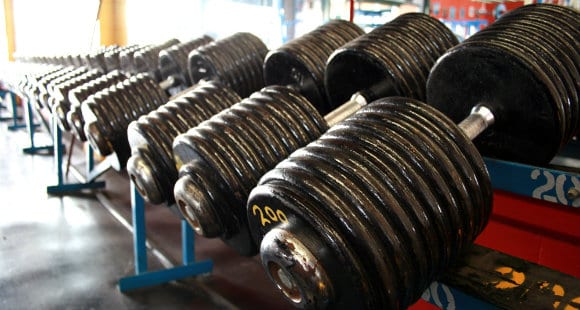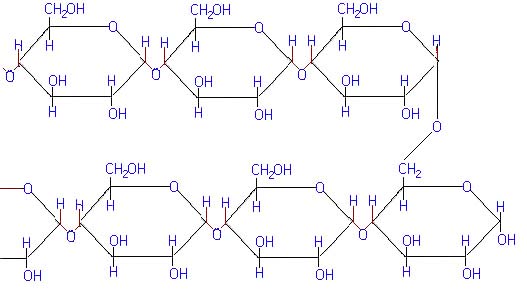By the healthiergang writer , graduated in Food Science and Technology, majoring in Nutrition and Functional Food.
Muscle supercompensation
We now introduce a very important concept, the supercompensation, which can be defined as a physiological process that occurs following a muscular work / stress, able to bring the muscle tissue to a stress phase (catabolic phase) and then, following a recovery / rest period, lead it to a subsequent restorative phase, of muscle growth and adaptation (anabolic phase).
In the anabolic phase, the body will first compensate for the stress created in the catabolic phase by returning to the starting situation but if put in the right conditions it will supercompensate the same by amplifying the anabolic effects of the first phase and laying the foundations for improvement.
Therefore, if the organism is subjected to a series of close homogeneous stimuli, of increasing amounts, and with the necessary recovery phases, its response will consist, over time, in increasingly stable and consolidated modifications.
Ultimately therefore, the organism will tend to respond to any action that modifies its balance, with a reaction that may exceed the action, shifting the initial normality to a higher, higher level. This concept, which is the basis of modern sports training, is defined by sports experts precisely as the body's ability to supercompensate.
1. Studies
Studies on this phenomenon date back to the early 900s from German pathologist Weigert, who studying the reparative processes (cicatrization) of damaged tissues noticed how the organism will first restore the damaged tissue and then generate excess, a phenomenon defined precisely "Weigert's law".
This phenomenon was later confirmed by Pavlov, Russian physiologist Nobel Prize for Medicine (1904) as well as other researchers and doctors in the following years. In particular, Jakovlev at the beginning of the 50s established the principle according to which: "the primary process of disintegration always causes or enhances the reaction responsible for resynthesis" also as regards the processes of glycogen resynthesis.
In fact, he noticed how the glycogen content decreased after work, during the rest period, it not only increased to the initial level but exceeded that initial state.
Further research, conducted by N. Jakovlev and his collaborators, showed that the supercompensation phenomenon is also correct for creatine phosphate, for enzymatic and structural proteins, for phospholipids, for the amount of mitochondria in muscle fibers, that is, for all substances that are used or altered, to a certain extent, during muscle activity and are resynthesized in the post-work period (Jakovlev 1983; Jakovlev 1986).

2. The importance of rest
Therefore it is easy to understand the importance of rest after muscular work, a moment in which the energy potential and the normal muscular state are not only restored but for a certain period the conditions for a higher working capacity are created.
The extent of this process and the speed of its development are directly proportional to the intensity of the use of substances during work (glycogen stores for example or muscle "damage"), while the duration of the maintenance of the supercompensation phase it is proportional to the absolute entity of the substances used.
Yakovlev states in his studies how this process extends to all substances used and demolished during muscular work with the exception of ATP, which is largely resynthesized during muscle work, as far as protein synthesis is concerned, this requires a large energy expenditure so it will only start when all the energy sources previously depleted and necessary for the purpose are recovered (creatinophosphate and glycogen ).
Studies conducted at the end of the 900s (Verchoshanskij, 1983) showed how the administration of concentrated loads characterized by an isolated explosive effort of strength (high volumes of specialized loads of strength concentrated in a short period of time) during the preparation of high-level athletes , all the parameters of the mechanical (external) working power decreased and then returned to the initial level and subsequently exceeded it even by 30%.
This effect was first defined as EARLT "long-term delayed training effect" relative to concentrated loads of force.
Let's try to be a little clearer: by concentrated load of force we mean a relatively short period of time from 2 to a maximum of 10 weeks and not of high intensity, given that in itself the "concentration" of workloads represents already the "intensifying" factor.
In any case, the intensity must be increasing. Verchoshanskij reported how this approach proved effective not only in promoting the development of muscle strength but also as a means of intensifying the work of the organism to increase the energy potential of the athlete's organism in question.
Let's go back to the concept of supercompensation: the concentrated training stimuli, causing as mentioned a prolonged alteration of homeostasis, force a specifically adapted organism to mobilize its own reserve possibilities, activating and stabilizing all the compensation mechanisms of the metabolism, guaranteeing a passage to a new and "higher" level of adaptation.
In fact when the loads are decreased and the intensity of the same changes, the result will be an increase in the level of psychophysiological functions with subsequent passage to the supercompensation phase, associated with an improvement in work capacity, the functional state of the cardiovascular system and muscle tone (Susman, 1985).
Similar effects seem to occur following short-term training sessions at medium altitude (2000 m asl) or in conditions of natural hypoxia as an “additional factor”, a practice used in the preparation of various sports. Upon returning to normal altitude (sea level) athletes such as cyclists, swimmers, runners showed parameters relating to maximum aerobic capacity, maximum oxygen consumption VO2max, etc ... similar to those verified with the EARLT and therefore with performance improvements.

3. Periodization and programming
We used these examples to demonstrate how important are the concepts of periodization and training planning to make considerations and speeches such as those related to supercompensation make sense.
Let us try to analyze even more in detail what happens following these alterations of the organism's homeostasis. From a biochemical point of view at the base there is a first intensification of the demolition of nucleic acids and tissue proteins (catabolic phase) and a subsequent increase in their biosynthesis (anabolic phase) which will increase the initial level of the same.
The main inducers of this new "adaptive" biosynthesis are all the cellular metabolites deriving from protein demolition and therefore it will be the proteins in question that will be the subject of resynthesis, therefore the constituent material of the cells and the enzymatic kit catalyzing all the biochemical reactions involved in these processes .
The recovery period is characterized not only by the increase in the anabolic phase but also by a greater speed of circulation of proteins in the muscles, able to determine a faster and more effective renewal of the molecular structure and of the acto-myosin complex and of other muscle proteins, eliminating waste metabolites and improving the stability of contractile function (Jakovlev 1986, Viru 1994).
4. Problems of supercompensation
The biggest problem with supercompensation is that a lot of assumptions have been made to date but still has not been It is possible to structure a method or a tool capable of instantly providing totally reliable data on the athlete's state of recovery and if therefore he was ready for a new stimulus through training, or at the intensity of the same or on the contrary if his body needed further recovery.
In fact, any training program cannot ignore the variables linked to the characteristics of the subject in question and, however theoretically, scientifically correct, it will be more suitable for one athlete and less for the other athlete.
The same external load can represent a very different internal load between different subjects (different responses to the same stimulus), therefore land recovery methods certainly cannot be applied equally to all athletes only according to the type of training performed.
In doing so, the risk will be that of obtaining improvements in subjects in which the next training will coincide with the end of the supercompensation phase while in others in which the recovery was not yet completed there will be stagnation or worse, decreases in performance.
5. Physiological parameters of the athlete
In addition to the intrinsic characteristics of the subject, further variables that will affect the possibility of evaluating the physiological parameters of the athlete daily establishing in what conditions the same is found are factors external to the "training" such as work, social relationships, psychological factors, sleep, stress factors superimposed on those caused by training.
To date, the most used parameters to assess the athlete's state of stress and recovery are: heart rate and blood pressure, the first with limits related to the impact of the nervous system linked to thoughts, memories and predictions and the encumbrance of any devices to be worn during the night, for example, the second (maximum / systolic and minimum / diastolic pressure) limited mainly by obligation to use arm sphygmomanometers.

Other tests such as urine pH or hormonal markers such as testosterone and cortisol (including their relative ratio) have instead the limit, especially the last ones, the fact of the difficulty of obtaining answers and therefore in highlighting the problem in acceptable times as well as costs.
A more recently used parameter was found to be the cardiac variability, or by measuring the distance between one heartbeat and another, not fixed but influenced by the two subsystems of the autonomic nervous system, the sympathetic one (acceleration of the beat) and the parasympathetic one (slowing the beat). Through mathematical analyzes, systems have been developed capable of evaluating this variability linked to the predominance of the activation system (sympathetic) or that of recovery (parasympathetic).
Problems however related to the survey and the modality (the athlete should breathe in a controlled manner and remain in an upright position during the analysis period) and therefore the accuracy / reliability of the data collected in this sense has raised a lot of perplexity.
The latest tools developed, digital devices capable of adding many of the parameters listed above seem to be up to date the most reliable and practical tools for athletes and coaches, however, we would certainly have to wait a little longer to obtain high-precision methods and tools in this regard.

























